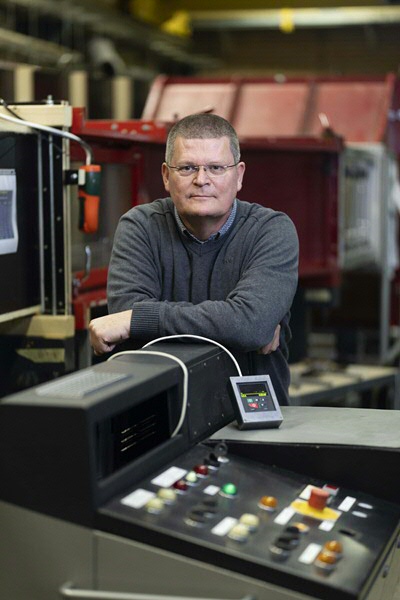Van paperclip tot patent | Eize Stamhuis
Hoe kan het dat een albatros niet te pletter slaat als hij landt? Of dat zijn grote vleugels niet breken als gevolg van de luchtweerstand? Volgens de wetten van de aerodynamica zou je dat verwachten. Professor Eize Stamhuis heeft echter ontdekt dat albatrossen veilig landen door ‘wiebelende’ vleugelbewegingen te maken. Bovendien ziet hij een mogelijke toepassing van deze oscillatietechniek om de bladen van windturbines efficiënter te maken. Hij weet op het intellectueel eigendom (IP) een patentaanvraag in te dienen en hiervoor ook de windindustrie te interesseren. Hoe gaat dat in zijn werk?
Tekst: Gert Gritter, afd. Communicatie RUG; foto's: Jeroen van Kooten
Zijn werkkamer in de ultramoderne Linnaeusborg oogt als een klassiek rariteitenkabinet. Op tafel staan bijvoorbeeld diverse 3D-prints van een kogelronde koffervis. Aan de wand hangt een afgietsel van een ichtyosaurus, een prehistorisch visachtig dier. Er zijn modellen van pinguïns. Kieuwen van een lepelsteur (afkomstig uit de vroegere Dierentuin Emmen) drijven in een pot met sterk water. Maar Stamhuis verzamelt niet om het verzamelen, maar om het toepassen en vermarkten. Alles dient een wetenschappelijk doel, waarbij hij zich laat inspireren door wat de natuur heeft ‘bedacht’. Zo ook de ‘wiebelbewegingen’ die albatrossen en andere grote zeevogels (waaronder stormvogels) met het uiteinde van hun vleugels maken om bij lage snelheid (dus voor het landen) meer ‘lift’ op te wekken, waar kleinere vogels als kraaien eenvoudigweg met hun gehele vleugels snel klapperen. Stamhuis: ‘In mijn onderzoeksgroep hadden we meteen een “gut feeling” dat hier meer inzat!’ > Lees verder bij de bron: Nieuwsbericht RUG.

